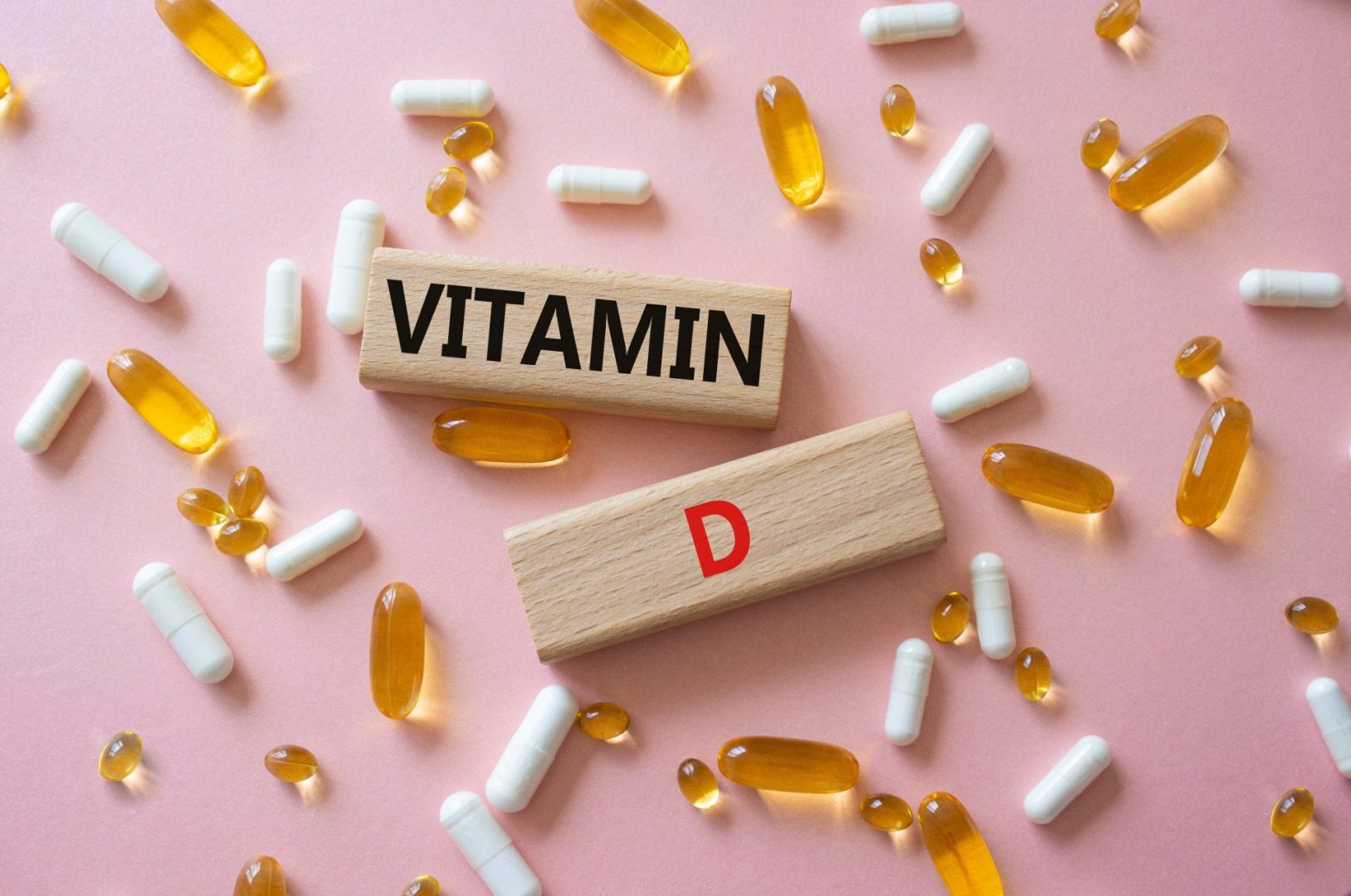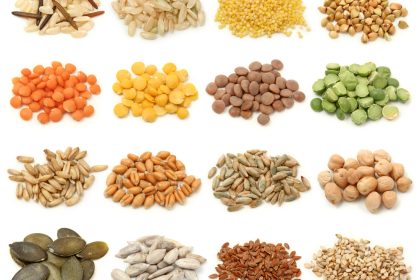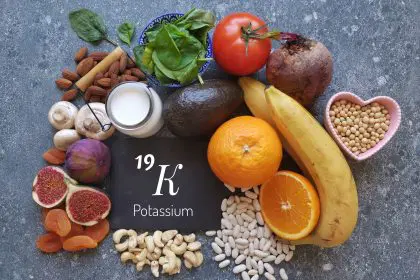Discover why this crucial nutrient might be the missing link in your wellness routine
A staggering 42% of Americans suffer from insufficient levels of vitamin D3, a critical nutrient that influences hundreds of bodily functions yet remains chronically overlooked in most health discussions. This “sunshine vitamin” plays far more extensive roles throughout the body than previously recognized, affecting everything from bone density to heart function and even mental wellbeing. Understanding its profound impact and ensuring adequate levels could represent one of the simplest yet most transformative health adjustments for millions of people.
Beyond bones: The surprising reach of vitamin D3
While commonly associated with bone health, vitamin D3 (cholecalciferol) functions more like a hormone than a typical vitamin, influencing cellular function throughout the entire body. Its mechanisms extend far beyond simple nutrient absorption, affecting genetic expression, immune response, and metabolic function through complex signaling pathways.
The vitamin’s unique production method sets it apart from other nutrients. When skin absorbs UVB radiation from sunlight, it triggers a conversion process that transforms 7-dehydrocholesterol into vitamin D3. This substance then undergoes further transformations in the liver and kidneys to become the biologically active form that exerts wide-ranging effects throughout the body.
This solar connection explains why deficiency rates skyrocket during winter months and in northern regions, where UVB exposure diminishes significantly. The seasonal nature of natural vitamin D production creates vulnerability cycles that affect millions of people without their awareness, potentially contributing to various health issues that fluctuate throughout the year.
5 unexpected ways vitamin D3 transforms your health
While bone support remains its most recognized benefit, vitamin D3’s influence extends into numerous systems throughout the body, creating effects that might surprise even health-conscious individuals.
1. Bone density protection beyond calcium absorption
Vitamin D3’s relationship with bone health extends far beyond simple calcium absorption. It orchestrates a complex dance between multiple minerals while directly influencing the cells responsible for bone remodeling and maintenance.
The vitamin regulates both osteoblasts (bone-building cells) and osteoclasts (bone-breaking cells) to maintain optimal bone density throughout life. This balanced regulation ensures bones remain strong yet flexible, capable of withstanding stress while adapting to changing movement patterns.
For aging adults, maintaining adequate vitamin D3 levels becomes increasingly crucial as natural bone density begins declining. Regular supplementation can reduce fracture risk by 20-30% in older adults by preserving bone architecture and strength. This protective effect becomes especially significant for postmenopausal women, who face accelerated bone loss due to hormonal changes.
Beyond preventing osteoporosis, optimal vitamin D3 levels also support dental health by strengthening the jawbone and potentially reducing periodontal disease risk. This connection highlights how the vitamin’s bone-supporting benefits extend throughout the skeletal system, including areas often overlooked in typical bone health discussions.
2. Immune system regulation and infection resistance
The immune system contains abundant vitamin D receptors, allowing this nutrient to significantly influence both innate and adaptive immune responses. This regulatory role helps explain why deficiencies correlate with increased susceptibility to infections and certain autoimmune conditions.
Vitamin D3 helps activate immune cells responsible for identifying and eliminating pathogens while simultaneously preventing excessive inflammatory responses that might damage healthy tissues. This balanced regulation helps maintain immune vigilance without triggering harmful overreactions.
The respiratory system particularly benefits from adequate vitamin D levels, with research showing up to 40% reduced risk of upper respiratory infections in those maintaining optimal status. This protective effect stems from vitamin D’s role in stimulating antimicrobial peptide production in respiratory tract linings, creating a more robust barrier against airborne pathogens.
During seasonal illness peaks, vitamin D3 status becomes especially important due to reduced sun exposure coinciding with increased pathogen circulation. This unfortunate timing means deficiency often peaks precisely when immune resilience becomes most crucial, creating a vulnerability cycle that supplementation can help address.
3. Mood regulation and mental wellness support
The brain contains substantial vitamin D receptors, particularly in regions involved in mood regulation and cognitive function. This distribution explains the growing evidence connecting vitamin D status with mental health outcomes, including depression and anxiety responses.
Several mechanisms contribute to this connection, including vitamin D’s role in neurotransmitter production and nerve cell protection. The vitamin supports production of serotonin, a key mood-regulating chemical often targeted by antidepressant medications. This pathway may partially explain why deficiency frequently correlates with increased depression symptoms, especially during low-sunlight seasons.
For those experiencing seasonal mood fluctuations, vitamin D supplementation during winter months often provides noticeable improvement in energy, motivation, and overall outlook. This effect appears strongest in those with previous deficiency, suggesting restoration of optimal levels helps normalize brain chemistry affected by seasonal light changes.
The cognitive benefits extend beyond mood, with evidence suggesting vitamin D plays roles in memory formation and information processing. Long-term deficiency correlates with accelerated cognitive aging in some studies, highlighting the nutrient’s potential importance for maintaining brain health throughout life.
4. Heart health protection through multiple pathways
Cardiovascular tissues contain abundant vitamin D receptors, allowing this nutrient to influence heart function, blood vessel health, and inflammation regulation. These effects create multiple protective pathways for cardiovascular wellness.
One key mechanism involves blood pressure regulation, as vitamin D helps control renin production – an enzyme involved in blood pressure management. Adequate levels help maintain healthy blood pressure by preventing excessive renin activity that might otherwise trigger vessel constriction and fluid retention.
The anti-inflammatory properties further protect cardiovascular health by reducing arterial inflammation that contributes to atherosclerosis development. This effect helps maintain vessel flexibility and blood flow while potentially slowing plaque formation in arterial walls.
For those with existing cardiovascular concerns, maintaining optimal vitamin D status becomes particularly important. Deficiency correlates with increased complications in those with heart conditions, while restoration of healthy levels often associates with improved exercise capacity and reduced symptoms in cardiac patients.
5. Metabolic regulation and weight management
The relationship between vitamin D and metabolism reveals another surprising benefit area, with growing evidence connecting adequate levels to improved glucose regulation and potentially easier weight management.
Pancreatic cells contain vitamin D receptors that influence insulin production and secretion. Proper vitamin function helps maintain insulin sensitivity in muscle and fat cells, allowing more efficient glucose uptake and utilization throughout the body. This regulatory role helps explain why deficiency correlates with increased type 2 diabetes risk in multiple studies.
For those struggling with weight management, vitamin D status deserves attention, as deficiency correlates with more difficult weight loss and increased fat storage tendencies. While not a weight loss miracle, ensuring adequate levels creates more favorable metabolic conditions that complement dietary and exercise efforts.
The seasonal nature of vitamin D production may contribute to winter weight gain patterns, as reduced levels coincide with holiday eating and decreased activity. This timing creates a perfect storm for weight gain that adequate supplementation might help partially mitigate.
How to determine your personal vitamin D3 needs
Given vitamin D3’s wide-ranging effects, determining optimal levels becomes an important health consideration. Several factors influence individual requirements, creating the need for personalized approaches rather than one-size-fits-all recommendations.
The key factors affecting your requirements
Geographical location significantly impacts natural vitamin D production, with those living above 37 degrees north latitude (approximately the northern border of California) experiencing dramatically reduced UVB exposure from October through March. This “vitamin D winter” creates seasonal deficiency risk regardless of outdoor time during these months.
Skin pigmentation also influences vitamin D synthesis, as melanin reduces UVB absorption. Darker skin tones may require 3-5 times longer sun exposure to produce the same vitamin D amount as lighter skin. This biological reality creates higher deficiency risk in those with deeper skin pigmentation, especially when combined with northern living locations.
Age further affects requirements, as the skin’s ability to produce vitamin D from sunlight decreases by up to 75% by age 70 compared to younger adults. This reduction explains why older adults face particularly high deficiency risks despite similar sun exposure patterns to younger individuals.
Health conditions affecting fat absorption can significantly impact vitamin D status, as this fat-soluble vitamin requires proper absorption to reach circulation. Conditions like Crohn’s disease, celiac disease, and gastric bypass surgery can dramatically increase requirements due to impaired absorption mechanics.
Understanding blood level targets
Blood testing provides the most accurate assessment of vitamin D status, measuring 25-hydroxyvitamin D levels to determine sufficiency. While definitions vary slightly between health organizations, general consensus establishes several interpretation ranges.
Levels below 20 ng/mL (50 nmol/L) indicate a deficiency state with increased risk of bone weakening and other health impacts. Readings between 20-30 ng/mL (50-75 nmol/L) suggest insufficiency where some body functions may be compromised. The 30-50 ng/mL (75-125 nmol/L) range represents general sufficiency for most health functions. Many researchers studying broader health impacts consider 50-80 ng/mL (125-200 nmol/L) as the optimal range. Readings above 100 ng/mL (250 nmol/L) raise potential toxicity concerns requiring dose reduction.
Most functional medicine practitioners aim for the 40-60 ng/mL range to support both bone health and the vitamin’s wider regulatory functions throughout the body. This target range provides cushion against seasonal fluctuations while supporting optimal cellular function.
The top 7 natural vitamin D3 sources
While supplements often become necessary for optimal levels, certain foods provide significant natural vitamin D3 content that can help maintain baseline levels when included regularly.
1. Wild-caught fatty fish for maximum absorption
Fatty fish like salmon, mackerel, and sardines provide the richest natural food sources of preformed vitamin D3. Wild salmon contains approximately 500-1,000 IU per 3-ounce serving, with the exact amount varying based on species, season of harvest, and cooking method.
The vitamin’s presence in fatty fish tissues highlights its fat-soluble nature and explains why these sources provide superior bioavailability compared to other food options. The accompanying healthy fats enhance absorption, making these sources particularly efficient at raising blood levels.
For optimal benefit, choose wild-caught over farmed varieties when possible, as wild fish typically contain 3-4 times higher vitamin D content due to natural feeding patterns and sun exposure. This difference creates significant impact when consuming fish as a primary vitamin D source.
2. Egg yolks from pasture-raised sources
Egg yolks provide modest but significant vitamin D3, with content varying dramatically based on chicken raising practices. Conventional eggs typically offer 20-40 IU per yolk, while pasture-raised varieties from chickens with sun exposure can provide 3-4 times that amount.
This variation demonstrates how natural sunlight exposure influences vitamin D content throughout the food chain. Chickens allowed outdoor access synthesize the vitamin through the same UVB mechanism humans use, then deposit it in egg yolks, creating a secondhand sunlight benefit.
For those including eggs as part of their vitamin D strategy, sourcing becomes particularly important. Choosing eggs specifically labeled from pasture-raised chickens provides the highest potential content compared to conventional or merely “cage-free” varieties.
3. UV-exposed mushrooms with plant-based potential
Mushrooms represent the only significant plant-based source of vitamin D, though they naturally produce vitamin D2 rather than D3 when exposed to ultraviolet light. This unique capability allows these fungi to convert ergosterol into vitamin D2 when subjected to either sunlight or commercial UV treatment.
Commercial UV-treated mushrooms can provide 400-700 IU per 3-ounce serving, making them valuable options for those following plant-based diets. While vitamin D2 shows slightly lower bioactivity than D3, these mushrooms still represent meaningful sources for vegetarians and vegans with limited alternatives.
Home mushroom UV treatment provides an interesting option for increasing potency. Placing mushrooms in direct sunlight with gills facing upward for 15-60 minutes significantly increases their vitamin D content through the same conversion process used in commercial treatment.
4. Fortified milk and alternatives with consistent levels
Dairy milk fortification has occurred since the 1930s, providing approximately 100-120 IU of vitamin D3 per 8-ounce cup. This consistent addition creates reliable baseline intake for regular milk consumers, contributing to daily requirements without dramatic dietary adjustments.
Plant-based milk alternatives now frequently include similar fortification levels, though content varies between brands. Checking nutrition labels becomes important when relying on these sources, as fortification remains optional for manufacturers of non-dairy alternatives.
The vitamin D in these products typically comes from supplements added during processing rather than naturally occurring in the base ingredients. This addition creates nutritional parity with dairy milk while addressing common deficiency concerns among those choosing plant-based options.
5. Cod liver oil with synergistic vitamin A
Traditional cod liver oil provides exceptional vitamin D3 concentration, offering approximately 400-1,000 IU per teaspoon depending on processing methods and brand. This historical supplement combines high vitamin D content with omega-3 fatty acids and vitamin A in naturally occurring ratios.
The synergistic combination in cod liver oil offers benefits beyond isolated vitamin D, as the included vitamin A and omega-3s work complementarily for immune, inflammatory, and cellular health. This natural nutrient profile explains the supplement’s long history of use, particularly in northern European countries with limited sunlight.
Modern versions offer improved taste profiles compared to historical varieties, making this traditional approach more accessible. For those seeking natural supplement options with minimal processing, high-quality cod liver oil provides efficient vitamin D delivery alongside complementary nutrients.
6. UV-exposed cow’s milk with enhanced content
Emerging specialty dairy products now include milk from cows raised with significant sun exposure, creating naturally higher vitamin D content similar to the pasture-raised egg effect. These products typically contain 3-5 times more natural vitamin D than conventional milk, even before additional fortification.
This production method aligns with regenerative agriculture practices that prioritize pasture time over confined feeding operations. The resulting milk provides enhanced nutrient profiles reflecting the animals’ natural living conditions and diverse forage options.
While these specialty products typically cost more than conventional alternatives, they offer naturally occurring vitamin D rather than added supplements. This distinction matters for those preferring minimally processed foods while still addressing nutritional needs.
7. Beef liver with modest supplemental amounts
Beef liver contains modest but meaningful vitamin D3 content, providing approximately 40-50 IU per 3-ounce serving. While not concentrated enough to serve as a primary source, liver contributes to overall intake when included in diverse diets seeking natural nutrient sources.
The vitamin D in liver comes paired with exceptional vitamin A content and highly bioavailable forms of iron, zinc, and B vitamins. This nutrient density makes liver valuable for overall nutritional status beyond its specific vitamin D contribution.
For those comfortable consuming organ meats, occasional liver inclusion provides vitamin D alongside other nutrients commonly lacking in modern diets. This traditional food represents historical vitamin D sources before supplementation became widespread.
Supplementation strategies for optimal results
Given the challenges in maintaining adequate levels through diet and sunlight alone, many people require supplementation to achieve optimal vitamin D status. Strategic approaches maximize benefits while minimizing potential concerns.
Choosing effective supplement forms
Vitamin D3 (cholecalciferol) generally proves more effective at raising blood levels than vitamin D2 (ergocalciferol), with research showing approximately 30% greater potency. This difference makes D3 the preferred form for most supplementation purposes despite slightly higher cost in some products.
Oil-based formulations typically offer superior absorption compared to dry tablets, as the fat-soluble nature of vitamin D requires dietary fat for optimal uptake. Softgels, liquid drops, and emulsified preparations generally show better bioavailability than compressed tablets, particularly for those with digestive or absorption challenges.
Combination products pairing vitamin D with vitamin K2 address complementary nutrient needs, as these vitamins work together in calcium metabolism and utilization. The K2 helps direct calcium to appropriate tissues (bones and teeth) while discouraging inappropriate deposition in soft tissues like arteries and kidneys.
Timing considerations for maximum benefit
Taking vitamin D supplements with the day’s largest meal typically improves absorption by 30-50% compared to empty stomach consumption. This timing ensures adequate dietary fat presence to facilitate uptake of this fat-soluble nutrient.
For those using larger weekly doses rather than daily supplements, consistent day-of-week timing helps maintain steady levels while simplifying adherence. This approach works particularly well for those with inconsistent daily routines or concerns about daily supplement management.
Morning or afternoon timing generally proves preferable to evening dosing, as some evidence suggests late-day vitamin D intake might influence sleep patterns for sensitive individuals. While not universal, this timing consideration may benefit those experiencing sleep disturbances when taking supplements later in the day.
Determining personal dosage needs
Dosage requirements vary substantially between individuals based on current status, body weight, age, skin tone, geographical location, and health conditions. This variation makes baseline recommendations merely starting points rather than definitive guidelines.
For those with confirmed deficiency (below 20 ng/mL), higher initial doses ranging from 5,000-10,000 IU daily for 8-12 weeks often help rapidly correct status before transitioning to lower maintenance levels. This loading dose approach, ideally monitored through blood testing, addresses the significant deficit while accelerating symptom improvement.
Maintenance doses typically range from 1,000-5,000 IU daily depending on individual factors, with darker skin tones, northern locations, older age, and higher body weight all potentially increasing requirements. Regular monitoring helps refine these amounts based on measured response rather than population averages.
For maximum safety and effectiveness, periodic blood testing every 6-12 months helps verify appropriate levels and adjust dosing accordingly. This monitoring becomes particularly important for those taking doses above 4,000 IU daily or those with conditions affecting vitamin D metabolism.
Potential interactions requiring attention
Certain medications interact with vitamin D supplementation, creating either increased needs or potential concerns requiring monitoring. These interactions affect both supplement timing and dose requirements.
Corticosteroids like prednisone increase vitamin D requirements by accelerating breakdown and reducing absorption. Those using these medications long-term typically need higher supplementation doses to maintain adequate levels despite increased elimination.
Cholesterol-lowering statins may have complex interactions with vitamin D, as some evidence suggests that vitamin D might reduce statin effectiveness when taken simultaneously. Separating doses by several hours typically minimizes potential interactions while allowing both to function effectively.
Weight loss medications and fat blockers significantly impair vitamin D absorption due to its fat-soluble nature. Those using orlistat or similar medications often require substantially higher supplementation doses or specialized formulations to overcome the reduced absorption capacity.
The remarkable transformation timeline
When correcting deficiency, noticeable improvements often follow predictable timelines as tissues respond to restored vitamin D levels. Understanding this progression helps maintain patience during the restoration process.
The initial benefits typically involve improved energy and reduced general musculoskeletal discomfort within 4-6 weeks of beginning supplementation. This early response reflects renewed cellular energy production and reduced inflammatory signaling throughout the body.
Mood and sleep improvements generally become apparent within 8-12 weeks as brain chemistry adjusts to normalized vitamin D signaling. Many report clearer thinking, better stress resilience, and more stable emotional states during this phase of repletion.
Bone density changes require longer timeframes, with meaningful improvements typically requiring 6-12 months of consistent supplementation. This extended timeline reflects the natural bone remodeling cycle that gradually incorporates minerals into strengthened bone matrix.
The full spectrum of benefits, particularly those involving immune function and cardiometabolic health, may continue developing for 12-24 months as cellular systems throughout the body gradually adapt to optimized vitamin D signaling pathways.















